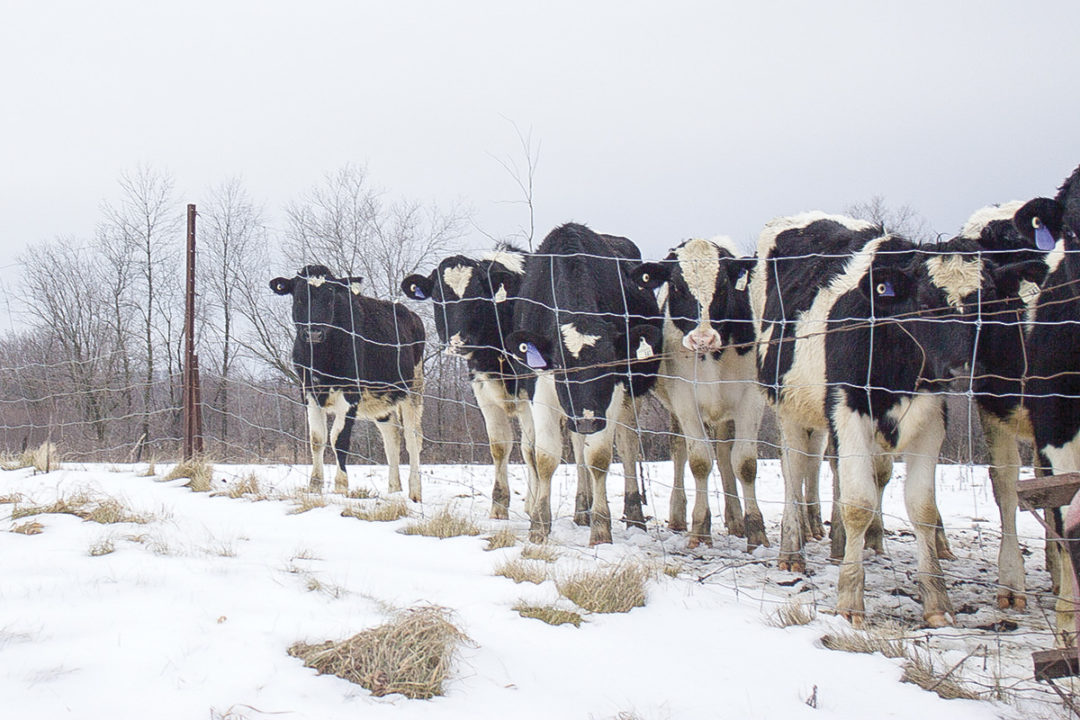To read this article in French, click here.
As temperatures in parts of the country dip below freezing, and moisture is prevalent, bovine hoof care demands some extra attention. Additionally, winter temperatures can affect common practices such as blocking, impacting the effectiveness and durability of adhesives.
During the winter, here are some key best practices for trimmers and dairy farms to consider.
1. Store blocking glue at room temperature
During the winter months, it’s critical adhesives and glue used to apply blocks on cow hooves are stored adequately. Ideally, glue should be stored in an environment between 65 and 75ºF to ensure best results. During the winter months, this is likely somewhere indoors or in an office.
When the temperature drops below 60ºF, adhesives and glues are at a higher risk of becoming compromised. If a tube becomes too cold, blocking glue can regain its bonding ability; however, for best results, it’s important the adhesive is not reheated artificially.
Imagine trying to cook a frozen chicken breast with a lighter. It’s going to heat the outside, but the inside remains frozen. This is similar to the effect of artificially heating glue. The outside material will warm up, but the inside won’t, compromising the efficacy and consistency of the liquid adhesive.
For trimmers, removing glue cartridges from their cars or trucks overnight and storing it indoors will help keep adhesive at a consistent temperature.
2. Use a heat gun when applying blocks
To help dry out hooves, consider using a heat gun on the hoof before applying glue and blocks. The heat gun will help ensure the foot is completely dry, and that adhesive and blocks stay bonded to the feet. Before a block is applied, a torch can be briefly used to warm the block to help ensure adhesion. Once a block is applied to a hoof, a heat gun can be used to help the glue dry.
When applying a block, hoof care professionals should line it up at a 90-degree angle with the inside of a cow’s leg to provide proper support. Once the block is positioned correctly on the foot, an 1/8- to a 1/4-inch of glue is just enough for the block to stick and stay. For best results, hoof care professionals should only apply the necessary amount of glue to hold the block to the foot firmly.
It’s also crucial to set up the adhesive completely before the animal bears weight on the block. To ensure the glue dries entirely in the winter months, keep the cow’s hoof elevated for at least three minutes. One way to tell whether the glue is dry or not is if it appears tacky versus completely hard. Once the adhesive is hardened to the touch, the block is set correctly, and the cow can bear weight on its feet.
3. Use a concentrated foot spray or footbath
When subzero temperatures limit the use of footbaths, concentrated sprays can be used to help fight infection, such as digital dermatitis, that can run rampant through dairies. For easy application, use a concentrated spray while cows are standing in feeding stalls, at a frequency of three to five times a week. These techniques allow for more effective control of infections for dairy herds.
Depending on the severity of hoof issues or cleanliness on a farm, the frequency of foot spray or baths will differ. Additionally, keeping the area around the footbath clean is crucial as well to prevent slipping.
4. Clean, clean, clean
In the winter, the wet climate, punctuated by ample rain or snow, sets the stage for infections to run rampant through a barn. As moisture collects bacteria and in turn breeds disease, it’s important for a cow to be in a clean, manure-free environment during the winter months. After all, moisture breeds disease. If dairy environments aren’t cleaned out frequently, hoof care issues can set in, and it can be difficult to conquer.
By scraping alleys, farms can minimize moisture and bacteria getting trapped in cows’ feet. Similar to mopping a kitchen floor, alley scraping should be done as much as possible and based on observation. Without an automatic system, this can be done anywhere from one to three times a day.
Consider these best practices during the winter months. Talk to your hoof care professional about the importance of adopting a good hoof care protocol during winter months and the best options for your dairy environment.








